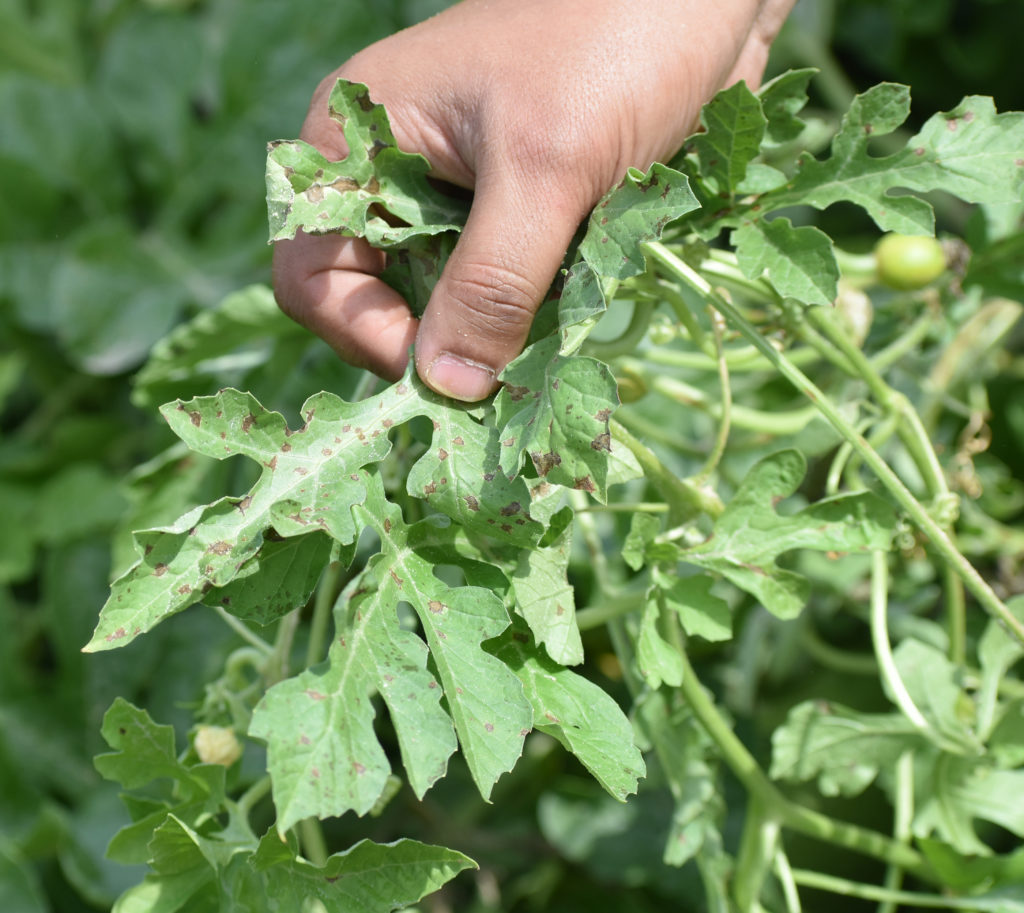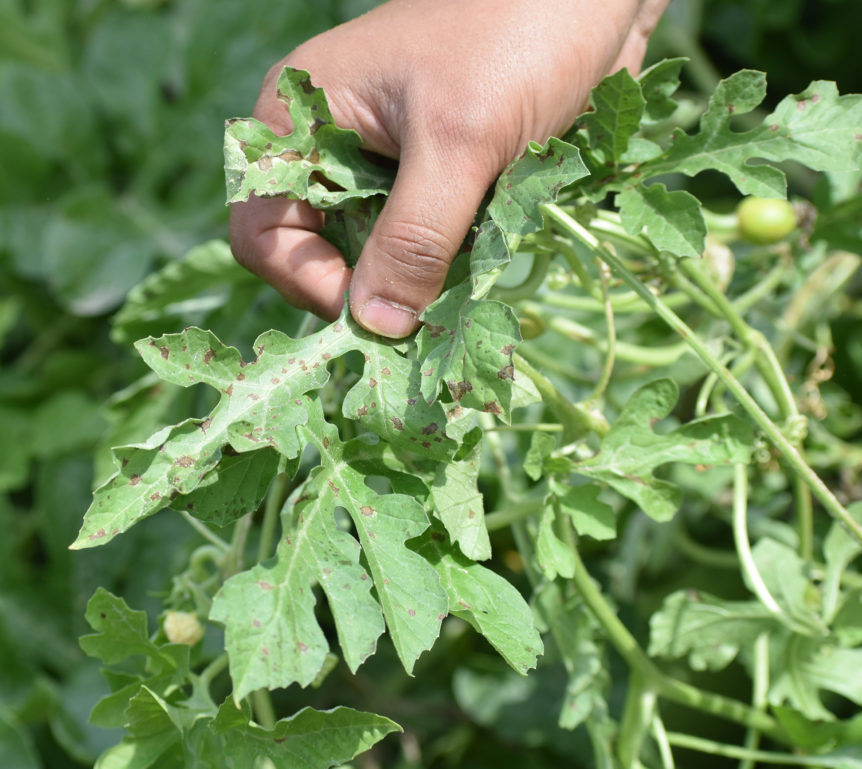
By Clint Thompson
University of Georgia (UGA) research aimed at managing anthracnose disease in watermelons continues on the Tifton Campus.
Project director Bhabesh Dutta, University of Georgia Extension vegetable plant pathologist, outlined various aspects of the grant during a recent Extension agent training. Dutta emphasized the importance of trying to reduce the disease’s impact from all angles.
“We’re trying to look at different aspects of anthracnose management on the east coast, and in Georgia we’re looking at different commercial varieties which are tolerant to anthracnose,” Dutta said. “We are also looking at how irrigation impacts anthracnose outbreak. We’re also looking at different fungicide programs. We’re also looking at biologicals that can reduce anthracnose severity. On top of that, we’re also looking at different breeding lines, new lines of melons and cucumbers with anthracnose resistance. Cecilia McGregor is leading that aspect from Athens.”
Disease Background
The disease primarily impacts cucumbers and watermelons, but other cucurbits can also serve as hosts. Its symptoms consist of leaf spots, defoliation and an occasional fruit lesion. It can also spread in the fruit bins after harvest, which makes it more difficult to control.
Dutta is helping lead a multi-state, four-year effort, studying the disease and specific management options growers could utilize. The project, “SAM: Sustainable Anthracnose Management for Watermelon and Cucumber Growers in the Eastern U.S.,” was funded for $4.8 million; $2.2 million is funding research at UGA.
The U.S. Department of Agriculture National Institute of Food and Agriculture is funding the research. It speaks to the severity of the disease where researchers like Dutta and co-project director Marin Brewer are studying it from all angles.
“It’s a very holistic approach we’re taking. This is a part of a very small section of our study,” Dutta highlighted. “Hopefully at the end of the fourth year, we’ll have a management package for the growers.”
Dutta’s research will also include storing watermelons for at least a week since the disease can have a post-harvest impact.
Weather conditions this spring were ripe for anthracnose buildup. But dry weather the previous two weeks have stymied its continued development.
“Under conditions that we had in early May where we had incessant rainfall and very light sunny days, those conditions are perfect for the spread of anthracnose spores and spread of inoculum leading to severe outbreaks,” Dutta said.










